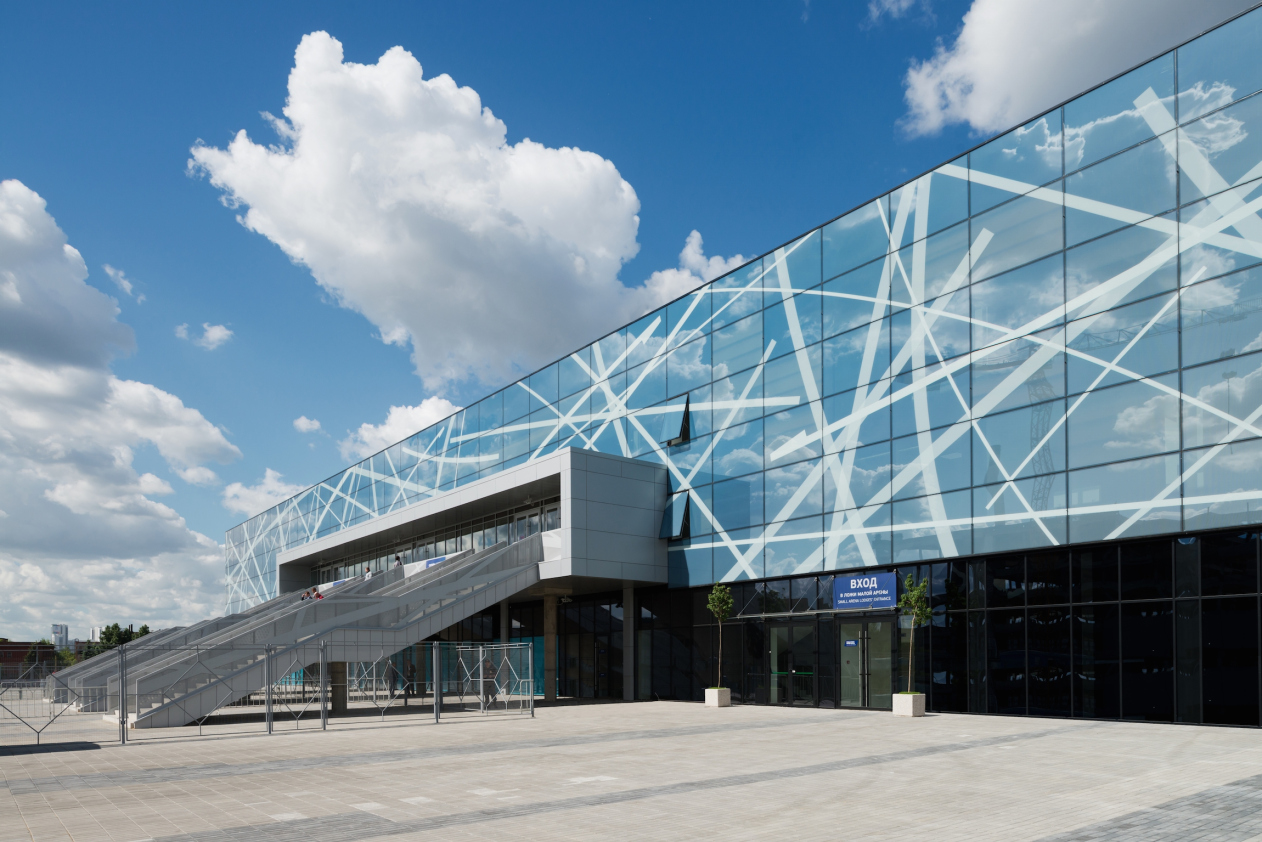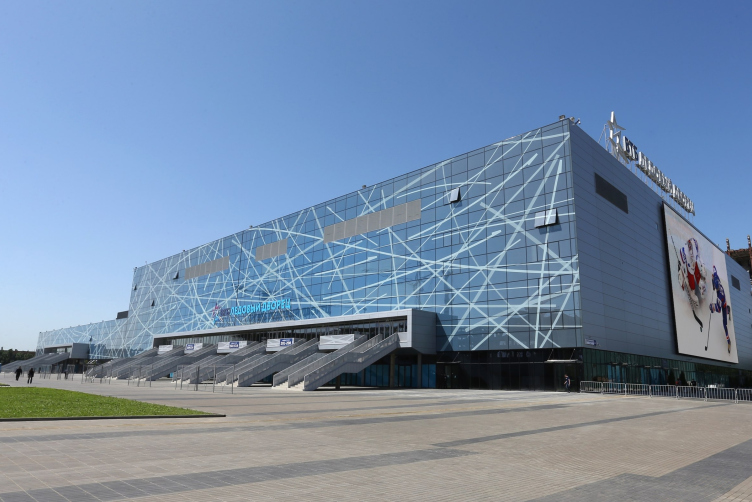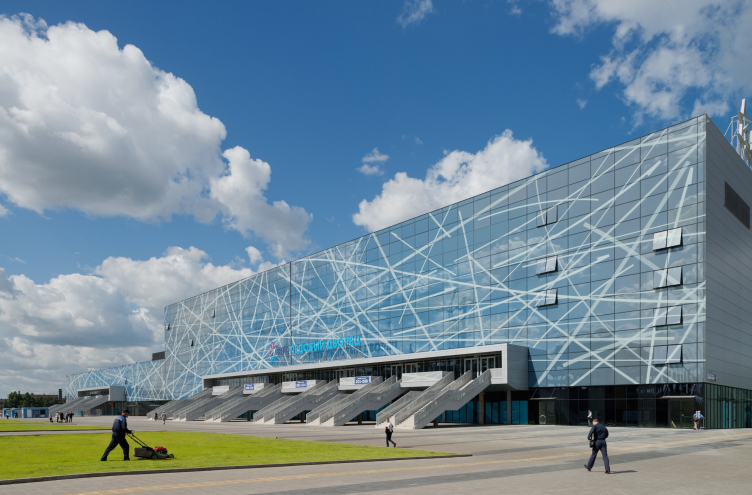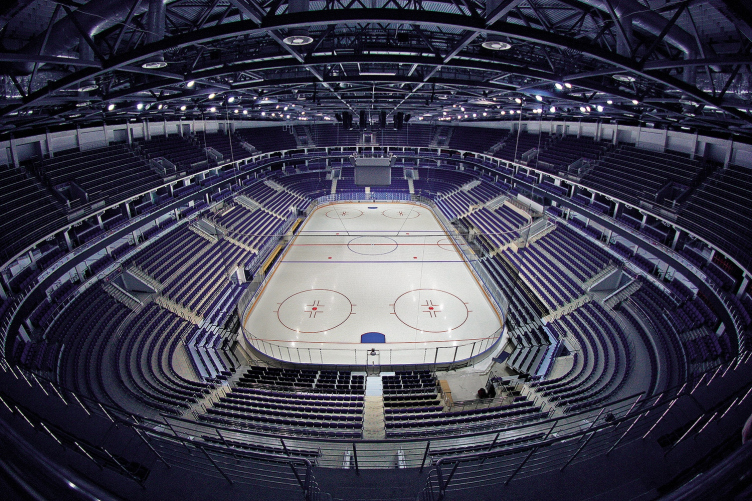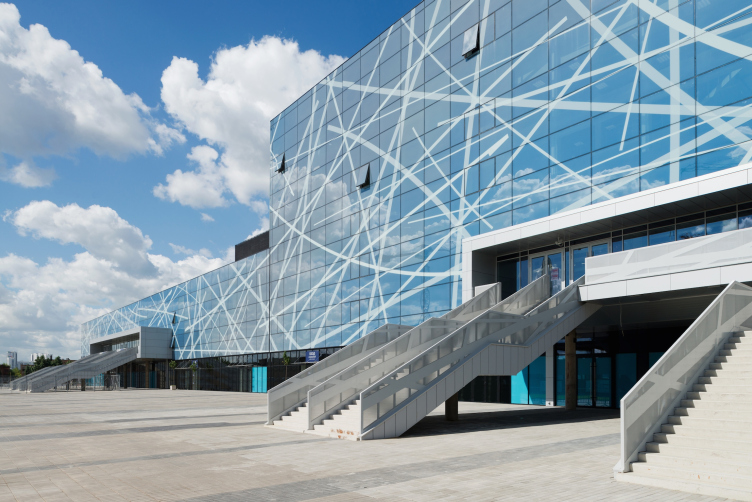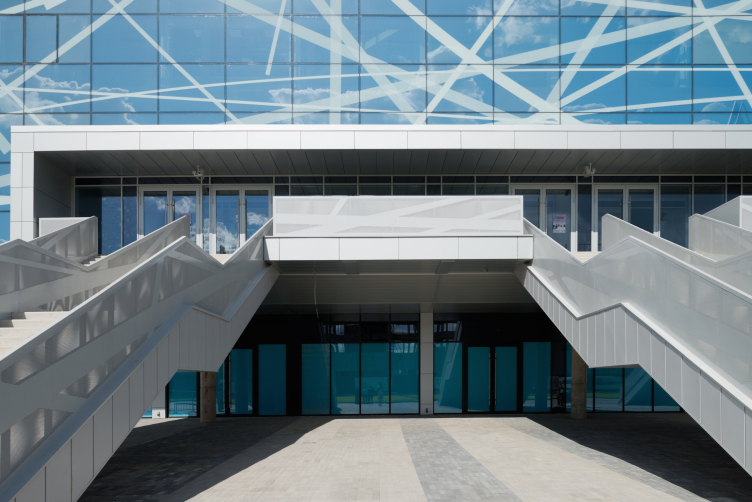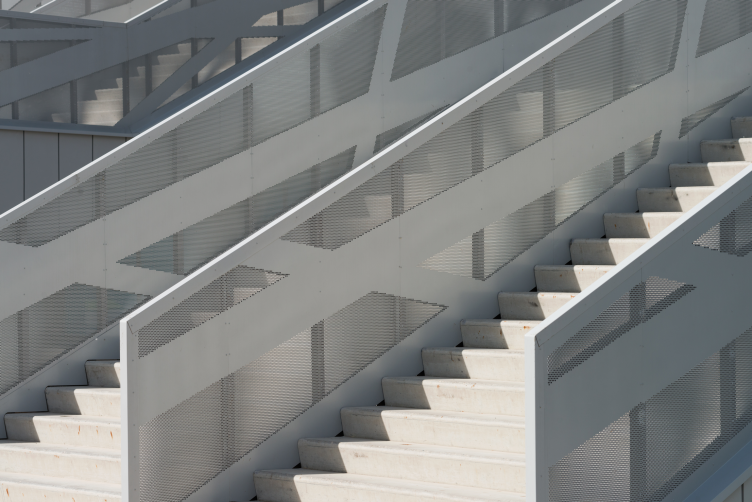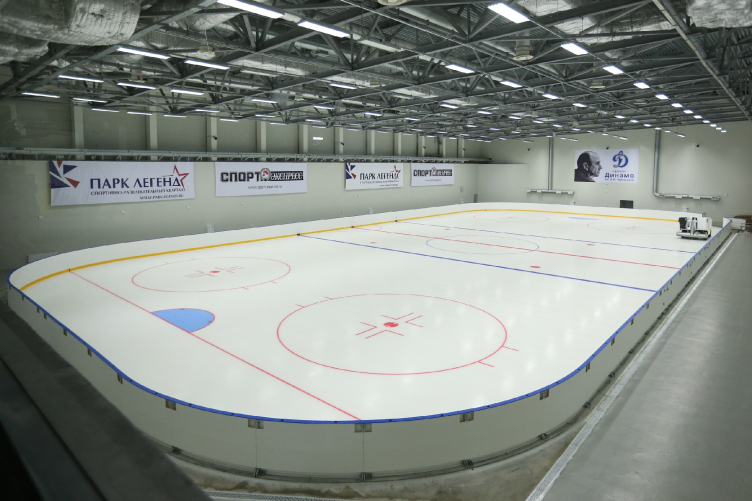Moscow's largest project of reforming its industrial parks - the integrated development of the territory of "ZIL" automotive plant - is gradually gaining momentum. Getting this giant into full swing is, of course, quite a tall order: the construction area is simply enormous, plans of its development are ambitious, and the functional range spans from preserving the automobile production to, for example, opening a subsidiary of Saint Petersburg's famous "Hermitage" museum. Nevertheless, the outlines of the first stage of this redevelopment - the sport and entertainment complex "Park of Legends" - are now quite clear, with its first and most important project already in full operation.
Still in April, the multifunctional sport complex "VTB Ice Palace" hosted the first games of "Legends Cup" tournament, while next year it is planning to host the World Hockey Championship. This kind of sport will be the basic one for the Ice Palace; the latter will also become the home venue of Moscow's "Dinamo" but, of course, all of its three skating rinks are perfectly suited for figure skating, and, thanks to the quick transformer technologies, both main arenas (12 000 and 3 500 spectator seats) can be easily adjusted to host other kinds of sport competitions, as well as shows, concerts, and festivals.
VTB Ice Palace. Photo © Ilia Ivanov
VTB Ice Palace. Photo © Ilia Ivanov
VTB Ice Palace. Photo © Ilia Ivanov
VTB Ice Palace. Interior Photo © Park Legend
The master concept was developed by SPEECH Bureau. Hitherto, the company's portfolio did not include ice arenas, although this is by far not the first time that SPEECH designs a sport facility: Kazan's Palace of Water Sports is much talked about, and the integrated reconstruction of Dinamo Stadium (VTB Arena Park) is now underway. In this particular case, Sergey Tchoban came up with the technology and the main parameters of the palace, after which the company solely did the design of the main facade.
The structure in fact consists of two parallelepipeds of different height united by a common facade, one of these parallelepipeds including the major arena, the other including the minor and the training ones. The laconic enough shape was chosen not for the practical reasons alone - although both the budget and the unprecedented time constraints called on to practicality. More important, however, is the fact that the palace was designed to be the first and the key element of the architectural complex of the central square of "Park of Legends" that, upon the completion of the construction, will connect the exit to the Third Transport Ring with the middle part of the territory under reconstruction. Alongside the long side of this elongated rectangular territory, across from the ice arena, there grows the complex of water sports; on the right, the square is adorned by the AMO plant management building designed by Konstantin Melnikov before the Great October Socialist Revolution back in 1916–1917 in the neo-empire style (currently, it is being renovated to house the Hockey Museum, while earlier in the day, during the "plant" time, it housed the ZIL museum); the square's southern side is supposed to ultimately get the pyramid of the Olympic a Committee of the Russian Federation. And, while the fate of the eyeball-to-eyeball opposition of the palace and the water stadium in construction can still be discussed, the relationship between the ice arena and the historical building of the future Hockey museum is already quite unambiguous. The objects are situated in such a way that on the side of the square the museum interacts with the main facade of the palace, while on the side of the Third Transport Ring the side facade comes into play, the one with a giant LED screen and the fan zone beside it. "To a large degree, it was these particular considerations that made us opt for the rectangular shape of the Ice Palace - Sergey Tchoban comments - What we wanted to do was offset the characteristic plastique of the historical volume with an elongated horizontal surface of the main facade, ostentatiously laconic in its shape and geometry". Just as dramatic is the interaction of the buildings' colors and textures - the saturated red of the facades of the former management building and the crystal blue of the polished glass of the ice arena. A curious and somehow very "Moscow-style" combination...
VTB Ice Palace. Photo © Ilia Ivanov
Against the background of this reserved architecture, the main meaningful load falls on the facade. It is quite a rewarding experience trying to trace the similarities between the ice arena and the Kazan's palace of water sports built a few years ago - in the latter case, the outward appearance of the building said less about its functional meaning. Now the water changed its physical form: it froze in a chunk of ice, and the ripples and circles on the water surface froze in a bluish gray gradient of a skating rink ready for the competition.
VTB Ice Palace. Photo © Ilia Ivanov
VTB Ice Palace. Photo © Ilia Ivanov
SPEECH stays true to itself - in its meticulous work with the surface, in its keen attention to detail, and in its love of glass, a unique material that is contemporary, cost-efficient, and one that has a huge decoration potential. By using the multi planar printing method, the architects adorn the "ice" of the facade with a chaotic spattering of white strokes, as if left by the athletes' blades; but then again, against the background of the Moscow sky reflecting in the glass, these strokes look more like an the inversion of an airplane flying by (the artistic concept of the facade design was developed in collaboration with the Berlin office of German nps tchoban voss). The theme is picked up by the railings of the stairways each of which leads to one of the entrance areas - by using the puncturing method the architects applied to them the same "stroke" motif, while the dynamic stairways themselves also bring up associations with the roller blades. Incidentally, the facade of the future water complex, judging from its published visualizations, will be covered with a pattern looking like ripples upon the water. Each of the three buildings on the yet-unfinished square proves to be symbolic and tell-tale in its own way: there is water on the one side, ice on the other, and the neo-empire building paradoxically built upon the project of the future great avant-garde architect that, when set against the backdrop of the glass giants, looks almost classical and embodies now the theme of museum history.
VTB Ice Palace. Photo © Ilia Ivanov
VTB Ice Palace. Stairway. Photo © Ilia Ivanov
The territory of the "ZIL Peninsula" is going to get quite a lot of different "wonders" - technological, cultural, and others. It is also going to get a lot of quality modern architecture. All the more honorable and responsible is the mission to be the first that the "Ice Palace" was destined to fulfill.
VTB Ice Palace. Interior Photo © Park Legend
VTB Ice Palace. Facades © ps tchoban voss
VTB Ice Palace. Facades © ps tchoban voss
VTB Ice Palace. Plan © SPEECH
